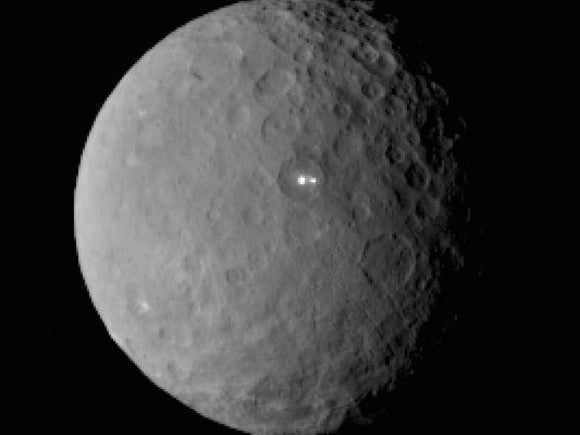Ceres becomes first dwarf planet to be orbited, as Nasa’s Dawn prepares to explore mysterious world’s surface
The craft is ‘healthy and thrusting with its ion engine’, according to Nasa

Nasa’s Dawn spacecraft has gone into orbit around the Ceres, the first mission ever to be captured by the gravity of a dwarf planet. Dawn’s journey promises to tell scientists more than ever about the mysterious planet, which sits between Mars and Jupiter.
The craft sent a message to Nasa this afternoon that it had been captured by the planets gravity. “Dawn was healthy and thrusting with its ion engine, the indicator that Dawn had entered orbit as planned”, NASA said, after Dawn sent a message to its Jet Propulsion Laboratory.
Scientists will now use the tools and sensors on board Dawn to understand the planet, including answering some of the mysteries that it has posed. On its way towards the planet, Dawn sent an image of two bright spots on the surface — and scientists will use the photos that the craft will take to work out what they are.

Ceres was discovered in 1801, and was first thought to be a planet. Its status was then changed to an asteroid, and it is now a dwarf planet.
Dawn took off in 2007 to reach the dwarf planet, embarking on a journey of 3.1 billion miles.
It will take pictures of the surface throughout its 16-month mission. But it will initially go dark, since its trajectory will take it around the side of the planet that faces away from the sun, until April.
"We feel exhilarated," said Chris Russell, principal investigator of the Dawn mission at the University of California, Los Angeles (UCLA). "We have much to do over the next year and a half, but we are now on station with ample reserves, and a robust plan to obtain our science objectives."
Join our commenting forum
Join thought-provoking conversations, follow other Independent readers and see their replies
Comments
Bookmark popover
Removed from bookmarks